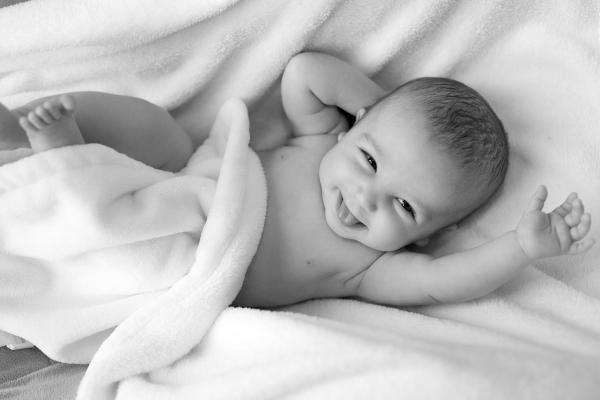Here is where the law should play a role.
In the US, the fertility industry is largely unregulated, so we don’t know how prevalent errors or abuses really are. Damages in civil lawsuits for culpable errors or negligence are strictly circumscribed, generally limited to those claimed by the mother incident to her pregnancy. But the mothers aren’t the only ones who’ve suffered - what about the children?
Fertility Fraud
One of the most vexing issues involves Fertility Fraud, with the earliest cases arising where a physician used his sperm to impregnate multiple women without their knowledge or consent.
The trauma comes when, with today’s DNA technology, a child suddenly discovers that she or he has a multitude of half-siblings and that her father isn’t who she thought he was.
With genetic testing, more cases will come to light, including the recent situation apparently resulting in ten known half-siblings allegedly “spermed” by one doctor. He is hardly the most prolific. Two years ago, it was discovered that a Dutch doctor fathered 21 children; American doctor Quincy Fortier fathered at least 24 children. In Canada, a class action found 226 children suing Dr. Norman Barwin, their physician-sperm-donor. (In July, the families settled for about $10 million). And in London, one doctor, Dr. Bertold Wiesner, apparently sired 600 children.
Creative Criminality
More than 50 fertility doctors in the United States have been accused of fraud related to donating sperm. Yet, at the time, they did nothing legally “wrong .” In the 1980s, Virginia fertility doctor, Cecil Jacobson, was believed to have inseminated 75 women. A federal jury convicted Dr. Jacobson of 52 counts of perjury and fraud in 1992 - sentenced to five years in prison and loss of his medical license. But similar to Al Capone’s conviction for income tax evasion rather than racketeering, the doctor’s conviction was not based on the direct battery or the unsavory practice itself but on more mundane charges of criminal fraud involving mail and wire fraud. (He telephoned out-of-state patients to make appointments and then mailed bills and insurance forms to them).
While unknowing doctor-donated insemination continued, the law lagged. Indiana became the first state to enact fertility fraud laws only three years ago, following the findings that Dr. Donald Cline perpetuated the practice. Here, too, Cline was creatively charged with obstruction of justice, false advertising, and immoral conduct. He, too, lost his license to practice medicine. Shortly thereafter, the Indiana legislature enacted its fertility fraud law. Since then, seven states have followed suit. Eight more states have proposed laws. This makes criminal prosecution more likely.
“It is a class C felony to misrepresent the identity of the donor or the quality of the material used in a fertility treatment with the purpose to defraud. A person is guilty of a class B felony if a healthcare provider knowingly uses unauthorized human reproductive material” The Arkansas Fertility Fraud Law.
The major problem in enforcement is that most US fertility centers require consent to donor anonymity, making the discovery of parentage difficult. For a premium, American sperm purchasers can upgrade to donor ID or donor ID on the child’s reaching 18 - something guaranteed by law in other countries such as Germany and the Netherlands, where the information is available at age 16.
Last year, Canada updated its regulations on assisted reproduction requiring donors to provide information about their health. But the information is only required to be preserved for 10 years - too short a time for a child, curious about their derivations, to know enough to get a “23 and Me” kit.
The hospital where the Dutch physician worked is setting up a DNA database to assist with identification. Israel proposes a registry listing all reproductive donors and limiting sperm donation to three children.
Until 23andMe and similar products came along, discovering duplicitous donation was mainly based on children born with different ethnic characteristics than expected.
This technology has - and will -- engender more lawsuits. Last week a jury returned a $5.25 million award against a Vermont doctor who used his own sperm. Vermont does not have laws forbidding this practice. But since the practice has largely been abandoned due to the rise in IVF facilities, the deterrence value of such awards is far too late, although the awards do satisfy the compensatory role of tort suits.
With the popularization of these DNA and Ancestry detection kits, children now have some agency – but it is two-edged; they have the knowledge, but upon learning of their parentage, offspring of such duplicitous practices are often left hurt, confused – and in states without fertility fraud laws, often claimless.
Motive
“some observers believe that a number of doctors may have gone on to use their own sperm to treat infertility when they were trying to build a reputation for themselves as successful fertility doctors.”
Generally, sperm “donors” (donors being a misnomer –contributions are generally not altruistic) are young and seeking additional cash. (One IVF clinic even structured its marketing to address this niche). But when the donor is the anonymous physician, the motivation is unclear. Some early doctors “active” in the 1940s - 1960s say they did it merely to help their patients.
Clearly, some doctors traded their sperm to beef up their practices and income. But we also see the influence of ego. Consider this claim published not two and a half months ago:
"World's Most Prolific Sperm Donor," Says He Has Fathered 129 Children Clive Jones claims to have fathered 129 children - with nine more on the way.”
Mr. Jones, not licensed to donate in the UK because he is overage, recruits his “clients” via Facebook and supplies for free. Sadly for Mr. Jones, his boast isn’t even close to true. The man thought to be Britain’s most prolific donor sells his sperm for 50 pounds a pop on Facebook and is believed to have sired 800 children.
Fertility laws don’t finger these culprits.
Unfair?
As welcome as they are, there is something disingenuous about the new fertility laws. Although they enable children of duplicitous doctors to bring a civil action, such claims are denied to children born when IVF facilities furnish the wrong sperm or mis-advertised sperm – even if the facilities’ malfeasance occasions a child born with a congenital disability or genetically inherited disease.
These IVF facility-conceived children are denied redress because but for the insemination, they would not be alive, and per the courts, there is no greater gift than that of life, no matter what the physical or mental conditions might be. By this analysis, what harm can children fathered by dissembling doctors claim? But for Dr. Duplicitous, they wouldn’t be alive.
Damage to Society and the Public Health
Perhaps far more damaging, although perhaps not as heart-rendering, is the sheer prolixity of the sperminators and the societal effect Scores of children born of the same parent are more apt to intermarry. For this reason, the “American Society for Reproductive Medicine (ASRM) recommends a limit of 25 children per population of 800 000 for a single donor.” In the United States, this would allow an individual donor to sire about one hundred children (!).
Perhaps a better focus would target unregulated use of reproductive materials which deviates from the mechanism of natural selection (or divine direction). The likelihood of one parent naturally siring more than 20 children is tiny. More children per parent also increase the likelihood that donors with deleterious genes pass them on, artificially altering the genetic fabric of the next generation.
The recent cases against Xytex, an IVF facility, are an example. Xytex aggressively mis-advertised and mis-marketed the sperm of one James Christopher Aggeles as hyper-intelligent (working on a Ph.D. in neuroscience), handsome, and healthy. In contravention of the mothers’ desires - Mr. Aggeles was, at the time, a college dropout with a history of severe mental illness, possibly hereditary, and a criminal record. Aggeles sired at least 36 children, some of whom are demonstrating disturbing symptoms. While the mothers may receive a minuscule award, most fertility fraud laws don’t apply – and the children are left legally bereft.
Why the law (and the legislature) shield IVF facilities yet increasingly try to hold doctors liable for negligent reproductive practices is unclear. We should also note that without the new technologies providing increased DNA identification – even increased regulation is impotent.




